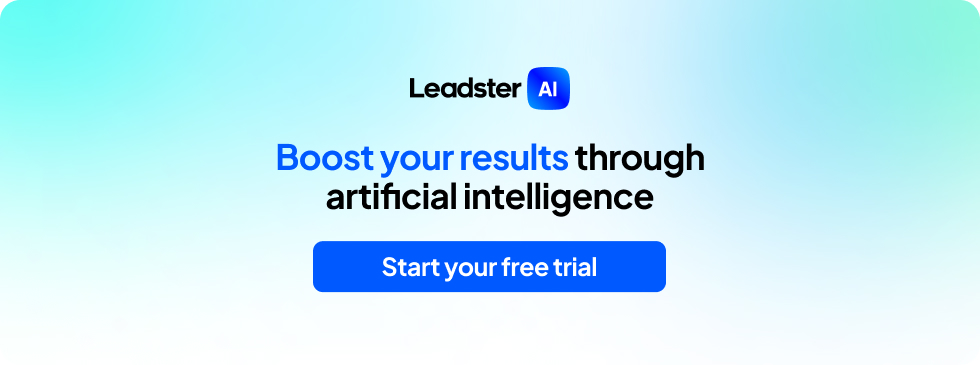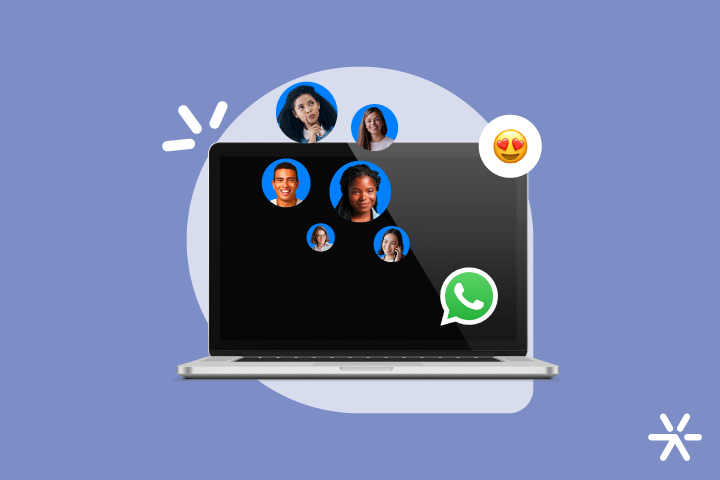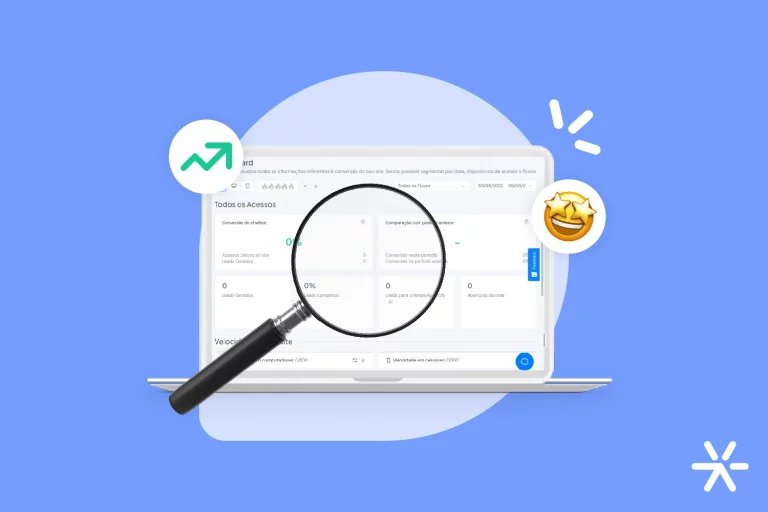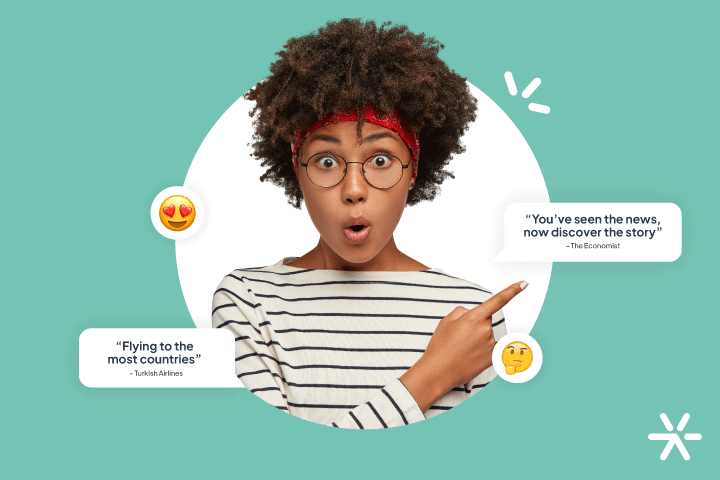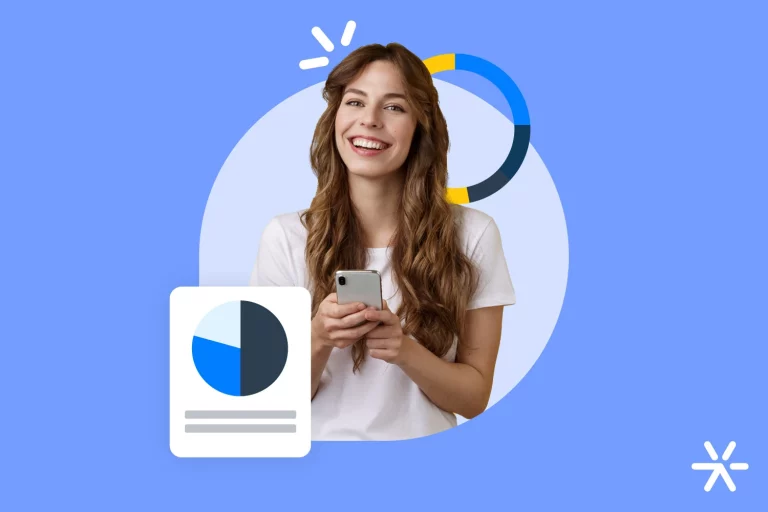How to Create a WhatsApp Chatbot: 3 Ways + Examples
Creating a WhatsApp chatbot can be easy or difficult depending on the approach you choose for this task.
That’s what we’re going to explore throughout this article. But first, we need to take a moment to discuss the importance of taking this extra step in your business’s customer service and lead generation efforts.
Working with a WhatsApp chatbot brings several advantages. The most important of all, however, is aligning your message with your positioning.
Digital marketing requires these two elements to bring you success. The creativity and effectiveness of your message need to be complemented by where and when you engage with your current and potential customers.
That’s what the WhatsApp chatbot provides you: the opportunity to always be close to those who will buy from you. And of course — the ease of this process that would be very complex and costly without the help of chatbots.
Well, we’ve already started the article loaded with a lot of information, right? 😅 So let’s dive right into it because today the topic is: how to create a WhatsApp chatbot? Check out a tutorial and some best practice tips.
Oh, and there are also message examples at the very end of the article. Let’s begin:
What is a WhatsApp Chatbot?
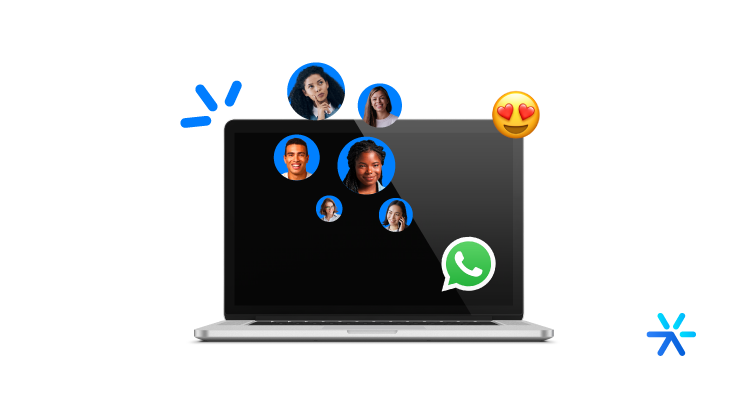
A WhatsApp chatbot is exactly what its name suggests: a robot that converses with your customers, leads, potential customers, and so forth.
However, the operation of the WhatsApp chatbot is not entirely controlled by a robot. In fact, only the delivery of messages is done automatically: the strategy creation and message writing are still done by people.
But, as you’ll see throughout the article, this is gradually changing. I even mention some examples later on of platforms that create the WhatsApp chatbot and still use Artificial Intelligence for automatic responses.
The WhatsApp chatbot has several functionalities and advantages. All of them are mainly related to the positioning of your company and better organization in your customer and lead lists.
Let’s discuss these points in more detail now. Come with me:
What are the advantages of creating a WhatsApp chatbot?
The biggest advantage of all is certainly adapting to the current market level.
You see, everything is always changing, but today this change happens much faster than a few decades ago.
As soon as WhatsApp emerged, there were already companies working on some form of platform support.
And now, with the availability of the WhatsApp chatbot, there are already thousands conducting their support and sales prospecting through this route.
So, having a WhatsApp chatbot brings many advantages, but the biggest one is its adaptation to the times, which have changed some time ago.
You don’t want to be that company that only answers the phone. And you also don’t want to be the company that doesn’t respond on WhatsApp promptly due to a lack of employees.
The WhatsApp chatbot solves these two problems. And now we’ll talk a little more about how exactly:
Total Availability
The WhatsApp chatbot doesn’t take days off. It also doesn’t have working hours, doesn’t take vacations, doesn’t have lunch breaks, and doesn’t need to step out to resolve any issues.
With it, you have total availability in customer service and outbound prospecting.
This is a very important point because the concept of chatbots is exactly this: you’re always available, to anyone, at any time.
And this is also one of the reasons many small businesses cite for not having WhatsApp support: if it’s only going to work when there are people in the company, then it’s better to provide a phone with one of the workers, right?
The WhatsApp chatbot solves these two problems. And even more, take a look:
Scalability without Overspending
And if this new strategy, of direct WhatsApp support, is so successful that you want to expand it and make it even more comprehensive?
If you were only relying on employees answering the phone or chatting on WhatsApp all day, this expansion would be difficult and costly.
And that’s the challenge of innovation, isn’t it? For something to work within the company, its growth cannot reach critical levels and disrupt its routines.
The WhatsApp chatbot comes with all its potential ready to be used. You can serve 1 customer or 1,000 on the first day: it works the same way.
Everyone uses it
This is the most important point, and what we were discussing at the beginning of this topic as well: everyone is on WhatsApp.
All your customers use the platform and won’t hesitate to try to contact you there. In fact, many will give up if they can’t reach you.
This is a positioning strategy. You need to be where people are to make sales.
Look: if there was already internet in the late 70s, there would definitely be a article telling you about the need to migrate to phone support because everyone uses it.
In the 80s, there would be several articles teaching you how to make that transition. But in the 90s, the articles would all be saying that the time has passed for phone support and that now it’s urgent: either you use it or you’ll be eaten up by your competitors.
At this moment, we’re transitioning from the 70s to the 80s. The technology of the WhatsApp chatbot isn’t exactly new, but companies are still implementing it.
And, in the meantime, your audience is massively on the platform, just waiting for you.
Professionalism
Whoever talks to you on WhatsApp needs to have a perfect experience. And that’s very difficult to guarantee with human agents alone.
First: through the chatbot, you can have total control over the message being conveyed to the customer. In all messages, in all interactions, regardless of the customer, time, etc.
Just that is impossible to guarantee with human agents alone. Variations in mood, training level, and motivation of the person handling the support can improve it or make it worse.
Second: you have time to create the best chatbot flow and write the best messages. And then, you have data to modify them according to their performance.
These two points will bring much more efficiency and ease to your support process.
Of course, you’ll still need agents for more complex support and deeper commercial approaches. But at least this first contact is guaranteed.
What is WhatsApp Marketing and How to Do It?
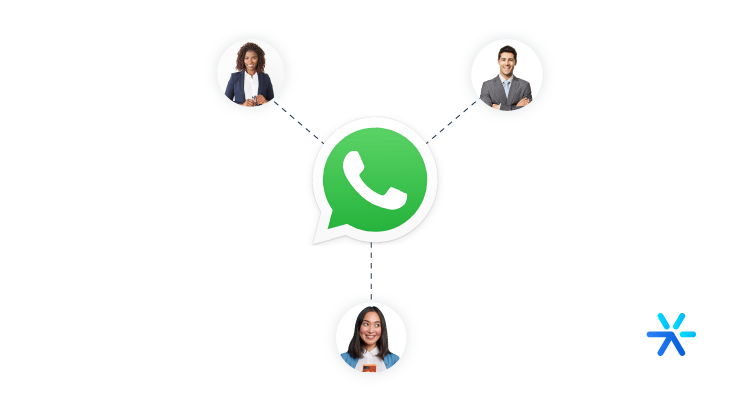
We’re delving into a very interesting topic here, and I think it’s worth exploring a bit further: WhatsApp Marketing.
As the name suggests, WhatsApp Marketing is a set of techniques, methods, and tools aimed at transforming your WhatsApp into much more than just a point of contact: it becomes a sales generator.
That said, I’ve brought some general guidelines here in this topic for you to get your WhatsApp Marketing off the ground.
Campaign Objectives for Ads Leading to WhatsApp
This is a more technical but also fundamental point in WhatsApp Marketing: how to set up ads on Social Ads and Google Ads to ensure that those who click go straight to WhatsApp?
By the way, this is also closely related to WhatsApp chatbots. You can configure automatic responses to these people and generate more leads and sales.
There are several ways to set this up on advertising platforms. We consulted with our Paid Media specialist, Karinne Garcia Lo Gullo, to help us:
“In my opinion, the best campaign objective on each platform is:
- Facebook Ads: campaign with the objective of traffic (cheaper) or conversion (more expensive), integrating WhatsApp into the ad account and having a clear campaign message, with a value proposition about what the user will get after clicking the CTA.
- Google Ads: if the goal is to increase leads through WhatsApp, create a campaign with the objective of maximizing conversion, leading the user to a short LP, direct message, and the shortest loading time possible, with a WhatsApp button to generate the lead.”
Lead Generation Focusing on WhatsApp
There are several different ways to generate leads through WhatsApp.
One of them is through cold outreach, an Outbound strategy that involves sending mass messages to an unqualified contact list.
Often, this strategy is used with people who have already made purchases in the store. This is one of the reasons why most major franchises and mall stores require registration with email and phone.
In a way, this is not a way to generate leads since you’re talking to people who have already bought from your store.
Another more classic and “purist” way is through the WhatsApp button. You configure it on your website and automatically send all your visitors interested in your brand and services to customer service.
This, too, of course, can be automated. And along with other strategies, such as using Landing Pages that lead to WhatsApp, for example.
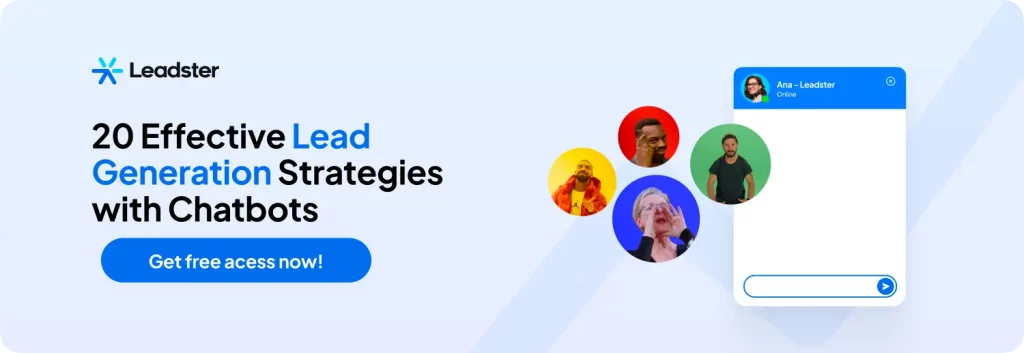
Creating a Relationship Strategy
This part is very important for both WhatsApp Marketing and the operation of WhatsApp chatbots.
The relationship strategy is nothing more than the skeleton of your chatbot flows. What exactly will your customer request? And what is the best way to deliver their request?
Along with that, there are other logistical questions. If there’s a sales flow through WhatsApp, are you also going to offer delivery or just pickup?
If during a cold approach strategy with old customers someone decides to buy, how will the chatbot handle the payment link, for example?
This mapping is crucial to build your flows. Automation only happens in the conversation. Everything behind it is your company’s responsibility.
Planning WhatsApp Content
The content you create to feed your flows is directly related to your relationship strategy. The one you created earlier.
Here, it’s best to focus on being useful and in line with what the person interacting with you is expecting from that message.
Being creative is great when it comes to attracting more customers, for example. Or generating more leads. But in an operational conversation, it’s good to be direct and facilitate the work for those talking to you.
Always keep that in mind. And respect the previous process of strategy development. It will guide the vast majority of your efforts.
Automating WhatsApp Sending
Here we’re getting a bit more technical and getting into the article’s main subject. Automating WhatsApp sending and customer service is the same as creating a WhatsApp chatbot.
The way to automate this sending is through the WhatsApp API. And just to let you know, it’s not possible to create a WhatsApp chatbot directly through the platform: you’ll need another, third-party, platform to do this work.
Here in the article, in the next topic, I’ll show you the three simplest ways to do this work and effectively create a WhatsApp chatbot.
But first, we also need to talk about the API. All automation and necessary integrations to make the WhatsApp chatbot work will go through it.
Follow along:
Understanding the WhatsApp Business API
An API Token is a line of code that allows program-to-program communication.
In our case, the WhatsApp API Token, or just “WhatsApp API” (as developers say 😛), is the code that will allow other software to use WhatsApp to communicate with your customers.
But it’s okay: you must be wondering now why this integration is necessary. Why does another software have to get involved?
Simple: because WhatsApp alone cannot create a chatbot.
That’s why all the work we’re going to show you below only happens with the support of the WhatsApp API. Without it, there’s nothing!
And speaking of that, let’s finally see once and for all what the process of creating a WhatsApp chatbot is like?
How to Create a WhatsApp Chatbot
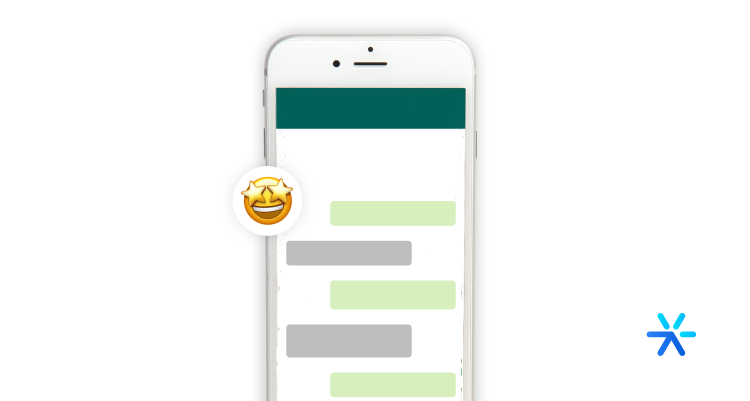
Alright, we’ve reached the main point of the article. Here, get ready to delve a bit deeper because there isn’t just one way to create a WhatsApp chatbot.
In fact, there are two main methods and a “bonus” one.
The first type of WhatsApp chatbot and the simplest one is built alongside a customer service platform that also offers integration with WhatsApp.
The vast majority of chatbots you’ve seen and interacted with are like this. This is the most popular path because it’s the easiest and simplest to replicate and adjust by the customer service team.
The second method is through a small Python software. For this case, you need an IT team in your company or mastery of the language enough to program the bot.
The third method is a bonus because it’s a bit less reliable. It’s possible to create a WhatsApp chatbot through Google DialogFlow, but this work is a bit more difficult and unpredictable than the other two.
That said, let’s delve into each of the methods?
Creating a WhatsApp Chatbot with Chatbot Platforms
This is the simplest way to create a WhatsApp chatbot because, most of the time, you only need to use the template provided by your platform.
Typically, this template is created through a codeless system, a simple relationship ruler with blocks and text.
In this case, the process for creating the chatbot is as follows:
- Create WhatsApp Business with a valid phone number;
- Choose the appropriate provider;
- Introduction of the API by the provider;
- Create flows and publish on WhatsApp.
It’s that easy. In fact, with a dedicated customer service platform by your side, you usually just need to wait for the WhatsApp API to be released, as the request is made directly by this provider.
After that, each company will have its own means of creating flows. The process of each one varies greatly.
And below, a quick list of tools we already know and have mentioned a few times here on the blog:
Creating a WhatsApp Chatbot with Google Dialogflow
This work is much more complex. Google has a specific tool, Dialogflow, which allows the creation of simple chatbots for use on websites.
The issue is that these chatbots, however simple they may be to create on the platform, still require a broad technical knowledge to implement.
Dialogflow is a very interesting tool for those who know what they’re doing. In our case, the work is divided into two main stages:
- First stage: get the WhatsApp API and create the flow in Dialogflow;
- Second stage: transform the created and saved flow into an executable and integrate it via API on WhatsApp.
The WhatsApp API used to be harder to obtain in the past. It used to only be available to authorized providers who then applied them for their clients.
Today, this is a bit different, with the Cloud API. You can get all the information about it by clicking the link.
If I were to go through the step-by-step process for creating the flow and implementing it in Dialogflow, we’d be here forever. So follow along in the video right below:
Creating a WhatsApp Chatbot with Programming
It’s also possible to create a WhatsApp chatbot by making your own firing program, but this is more for those who really understand programming and want to challenge themselves.
That’s because the two methods we’ve presented so far basically solve any need you have. With programming, you end up having to create the entire interface to make the flow work, and Dialogflow already solves that.
Anyway, I’ll leave here the video from the same channel I used to illustrate this process in creating chatbots for Telegram, in our article on the subject.
Follow along:
Well, this is the moment you ask the classic question: what’s the best way to create a WhatsApp chatbot?
I’m very tempted to be reasonable and say that all three ways have their advantages, and that’s actually true.
But the ones involving programming are much more complex and end up completely alienating the team that will work with the tool. This is not to mention the simplicity of this type of solution.
With a WhatsApp chatbot provider, things are a bit different. Everything is much faster and you end up not having to deal with the more technical aspects.
This comes with a price, of course, but this price is justified by the accessibility and guarantees that the tools offer.
But now, to finish the article, one last super interesting topic:
5 examples of messages for WhatsApp chatbots
Everything is quite specific in the world of WhatsApp chatbots.
Here I tried to be as general as possible to provide you with a basic list of some examples to inspire you, and unfortunately, I can’t go much beyond that.
It’s because chatbot flows depend on your strategy and, of course, they also depend on what you’re offering.
That’s why I’ve separated some messages here not related to your business, but to the moment of contact with your customer or lead. Check it out:
- First contact: Hello! We are from [STORE NAME] and we have an amazing opportunity. Only today, we have [OFFER]. And if you’re seeing this message on WhatsApp, you already have a discount! Use the coupon [COUPON] and save 25% on your first purchase!
- Qualified leads: Hi, how are you? I heard that you showed interest in one of our products or services. I’m here to help you, okay? Just let me know how I can get in touch with our sales team. Thank you for your interest!
- Follow-up after an initial message: Hello, [PERSON’S NAME]. This is [NAME] from [COMPANY NAME]. Following up with you regarding your quote request. Attached is the information.
- Schedule a meeting: Hello! Thank you for the quote request. Can we meet next week, on day X at time Y, to discuss the proposal further? I’ll be waiting. Thank you!
- Re-engage an old lead: Hey, how’s it going? This is [NAME] from [COMPANY NAME]. Last time we spoke, you were looking for [SERVICE]. Did you find what you were looking for? I have a discount here that you might be interested in if not. Thank you!
***
The verdict is that it’s easier for you to start your work on WhatsApp by relying on a partner to facilitate implementation.
One of the main features of such integration is the ability to automatically send qualified leads to your sales team’s WhatsApp.
This is one of the features we offer here at Leadster. By distributing contacts to sales representatives instantly, you can manage your response time very well, increasing your sales.
By integrating Leadster with WhatsApp, you increase the number of contacts while also generating leads.
And of course: you can also filter this lead generation much better. They come in as much more qualified contacts.
You can do all that with Leadster too directly on your website. Generate leads and send them straight into your WhatsApp automation system!
You can test us and see how a lead generating chatbot can fit into your WhatsApp automation today. No credit card required and the trial period lasts for 14 days.
Ready? Jst click on the link above. Thank you for reading and we’ll see each other again in the next article. See you there!
